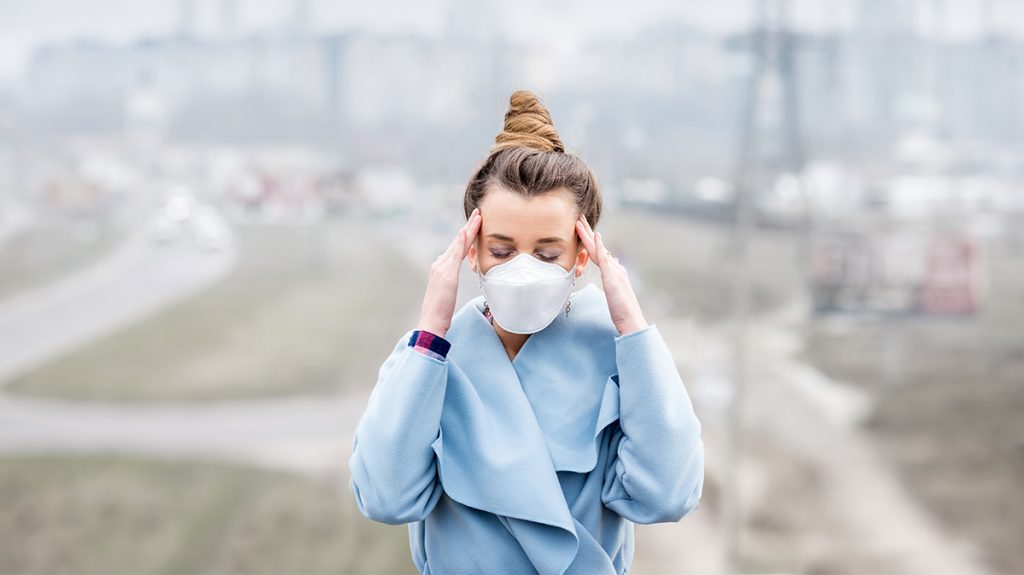Professor Yuming Guo
In a world first study of daily ambient fine particulate matter (PM2.5) across the globe, a Monash University study has found that only 0.18% of the global land area and 0.001% of the global population are exposed to levels of PM2.5 – the world’s leading environmental health risk factor – below levels of safety recommended by World Health Organization (WHO).
Importantly while daily levels have reduced in Europe and North America in the two decades to 2019, levels have increased Southern Asia, Australia, New Zealand, Latin America and the Caribbean, with more than 70% of days globally seeing levels above what is safe.
A lack of pollution monitoring stations globally for air pollution, has meant a lack of data on local, national, regional and global PM2.5 exposure. Now this study, led by Professor Yuming Guo, from the Monash University School of Public Health and Preventive Medicine, and published in the prestigious journal, Lancet Planetary Health, has provided a map of how PM2.5 has changed across the globe in the past decades
The research team utilised traditional air quality monitoring observations, satellite-based meteorological and air pollution detectors, statistical and machine learning methods to more accurately assess PM2.5 concentrations globally, according to Professor Guo.
“In this study, we used an innovative machine learning approach to integrate multiple meteorological and geological information to estimate the global surface-level daily PM2.5 concentrations at a high spatial resolution of approximately 10km ×10km for global grid cells in 2000-2019, focusing on areas above 15 μg/m³ which is considered the safe limit by WHO (The threshold is still arguable),” he said.
The study reveals that annual PM2.5 concentration and high PM2.5 exposed days in Europe and northern America decreased over the two decades of the study – whereas exposures increased in southern Asia, Australia and New Zealand, and Latin America and the Caribbean.
In addition, the study found that:
Despite a slight decrease in high PM2.5 exposed days globally, by 2019 more than 70% of days still had PM2.5 concentrations higher than 15 μg/m³.
In southern Asia and eastern Asia, more than 90% of days had daily PM2.5 concentrations higher than 15 μg/m³.
Australia and New Zealand had a marked increase in the number of days with high PM2.5 concentrations in 2019.
Globally, the annual average PM2.5 from 2000 to 2019 was 32.8 µg/m3.
The highest PM2.5 concentrations were distributed in the regions of Eastern Asia (50.0 µg/m3) and Southern Asia (37.2 µg/m3), followed by northern Africa (30.1 µg/m3).
Australia and New Zealand (8.5 μg/m³), other regions in Oceania (12.6 μg/m³), and southern America (15.6 μg/m³) had the lowest annual PM2.5 concentrations.
Based on the new 2021 WHO guideline limit, only 0.18% of the global land area and 0.001% of the global population were exposed to an annual exposure lower than this guideline limit (annual average of 5 μg/m³) in 2019.
According to Professor Guo, the unsafe PM2.5 concentrations also show different seasonal patterns “included Northeast China and North India during their winter months (December, January, and February), whereas eastern areas in northern America had high PM2.5 in its summer months (June, July, and August),” he said.
“We also recorded relatively high PM2.5 air pollution in August and September in South America and from June to September in sub-Saharan Africa.”
He added that the study is important because:
“It provides a deep understanding of the current state of outdoor air pollution and its impacts on human health. With this information, policymakers, public health officials, and researchers can better assess the short-term and long-term health effects of air pollution and develop air pollution mitigation strategies.”
From: https://www.monash.edu/news/articles/world-first-study-into-global-daily-air-pollution-shows-almost-nowhere-on-earth-is-safe


